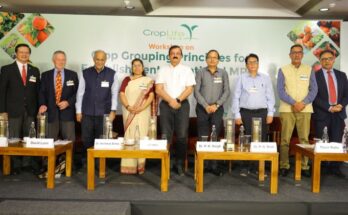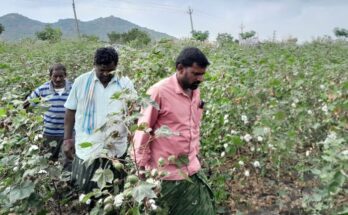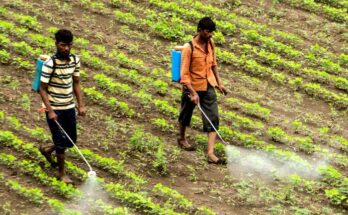With a population of 1.3 billion people, India is the second most populous country in the world and is also the world’s largest producer of milk, pulses, and jute. With the green revolution, it also became the second-largest producer of cereals like rice, wheat, as well as vegetables, groundnut, fruit, sugarcane, and cotton. Crop protection sector has played an important role in bringing this change from subsistence farming, low growth in crop and grain production to the green revolution that propelled surplus production in the 1980s.
However, not much is said about the important role played by the backend R&D in the agrochemicals sector which is playing an important role in making this transition possible. Crop Protection chemicals, with a market size of approximately Rs 30,000 crore plays a key role in enhancing India’s agricultural capability. The agrochemical sector thrives on a purely scientific basis that gels well with the traditional farming practices. While in the initial days, collaboration was a part and parcel of this scientific journey, with the pandemic, Indian companies are fast becoming interested in upgrading their research and development capabilities and facilities to harness their power independently. In the process, they are not only bolstering Indian manufacturing but are reorienting themselves from being a manufacturer to a solution provider.
Formulations offer performance, technicals offer expertise
Agrochemicals are of two types – a) technicals, and b) formulations, either generic or new generation. Technicals are the primary chemicals or active ingredients that form the basis of an insecticide, herbicide, fungicide or plant growth regulator (PGR). They are available in raw form and hence, are not suitable for direct use. This is where formulations come to play. Formulations are usually a different type of combination of various proportions and varieties of technical products, mixed with a suitable and compatible carrier. The carrier helps the concentrated mix of technical to dilute and make the technical available as per the recommended dosage of the same, to be used by the farmer. While the collaborations are instrumental in introducing world-class agrochemicals to India, but today the new generation formulations made in India have also been proven to be equally efficient and cost-effective too. They are easy to spray or easy to broadcast with a low dosage and effective control.
You may also like to read: CropLife India welcomes Govt’s SOP for drone application in agrochemical spraying
For example, according to a study, earlier one acre of wheat cultivation on heavy textured soil usually required 500 grams of the generic formulation of Isoproturon, while, the same amount of land will require only 13.5 grams of Sulfosulfuron. Hence, it is obvious that agrochemical companies will increasingly focus on introducing new generation formulations in their R&D capabilities and product mix to have an edge. Indian agrochemical companies are also making significant strides in developing technicals, especially in the wake of the pandemic when its main exporter China had to shut down operations. Estimates show that the Indian agrochemical industry is expected to record a CAGR of 8 per cent by FY22. This is a major movement towards attaining self-reliance in the industry.
Recognitions & certifications help build credibility
Being recognised or certified by the government and other related agencies ensures that the R&D centre meets standards set for the research in the industry. However, getting certified can be a long haul and though it does not remove the necessary checks and balances required as part of the regulatory framework for the crop protection industry. The certifications issued by the Department of Scientific and Industrial Research (DSIR) under the Ministry of Science and Technology, and the National Accreditation Board for Testing and Calibration Laboratories (NABL) certification by the Quality Council of India are two crucial certifications along with GLP for research and QC labs in India.
Insecticides (India) Limited (IIL) started its research with its first R&D centre at Chopanki in 2005 which is recognised by DSIR and is NABL accredited and is in process for GLP accreditation.
(Rajesh Aggarwal is the Managing Director of Insecticides (India). Views expressed in the article are the author’s own. Agriculture Post doesn’t assume any responsibility or liability for the same.)




